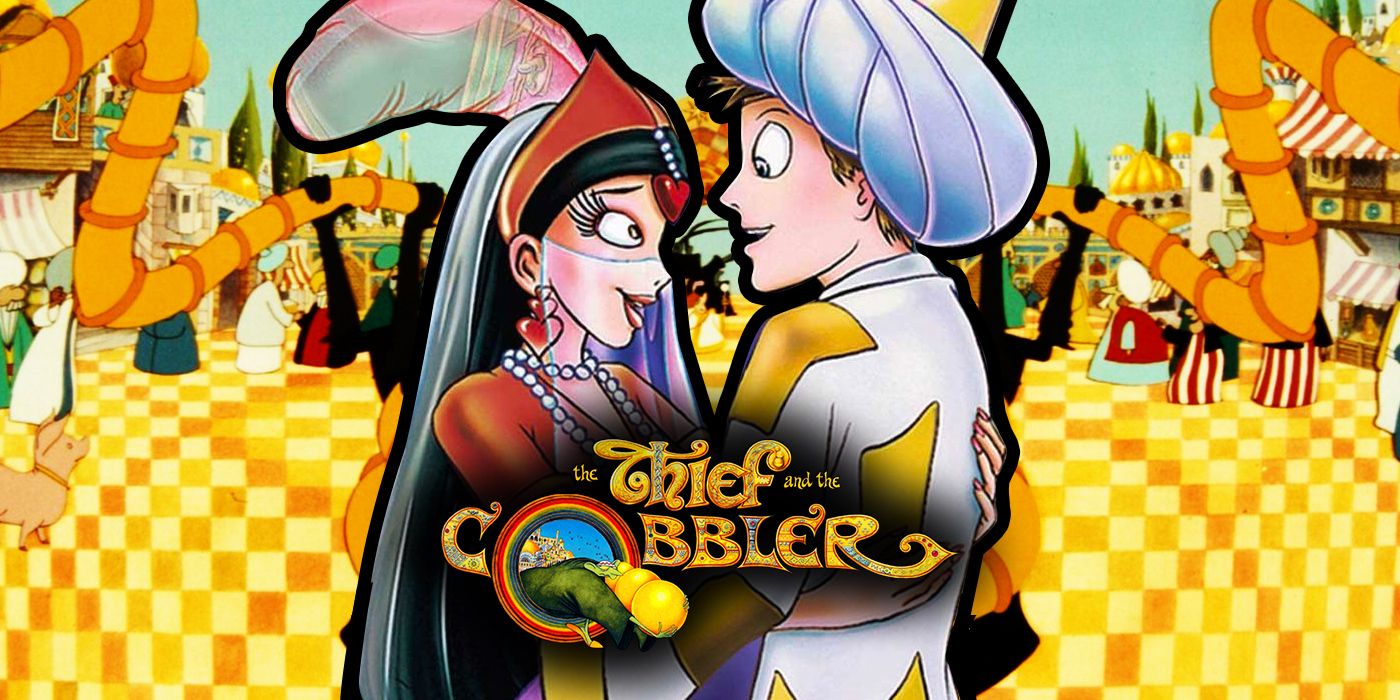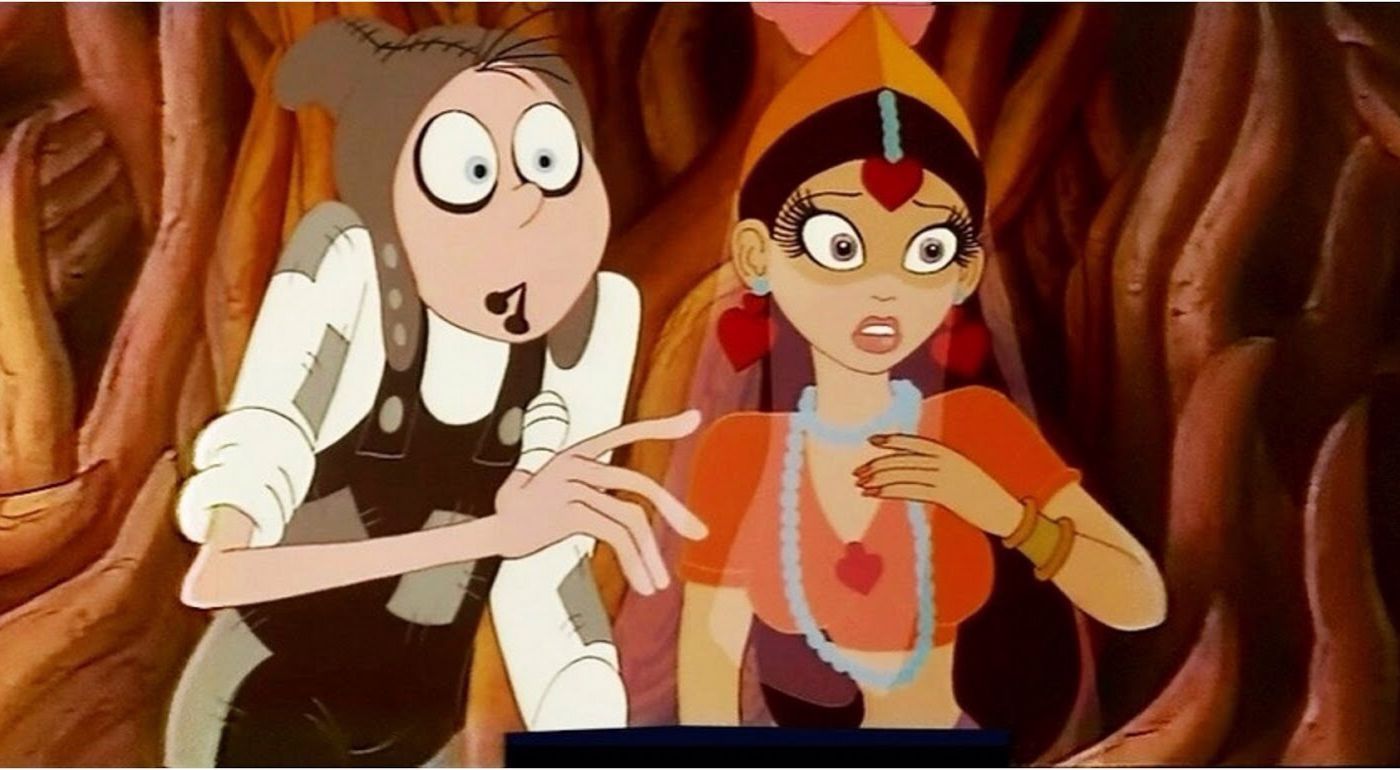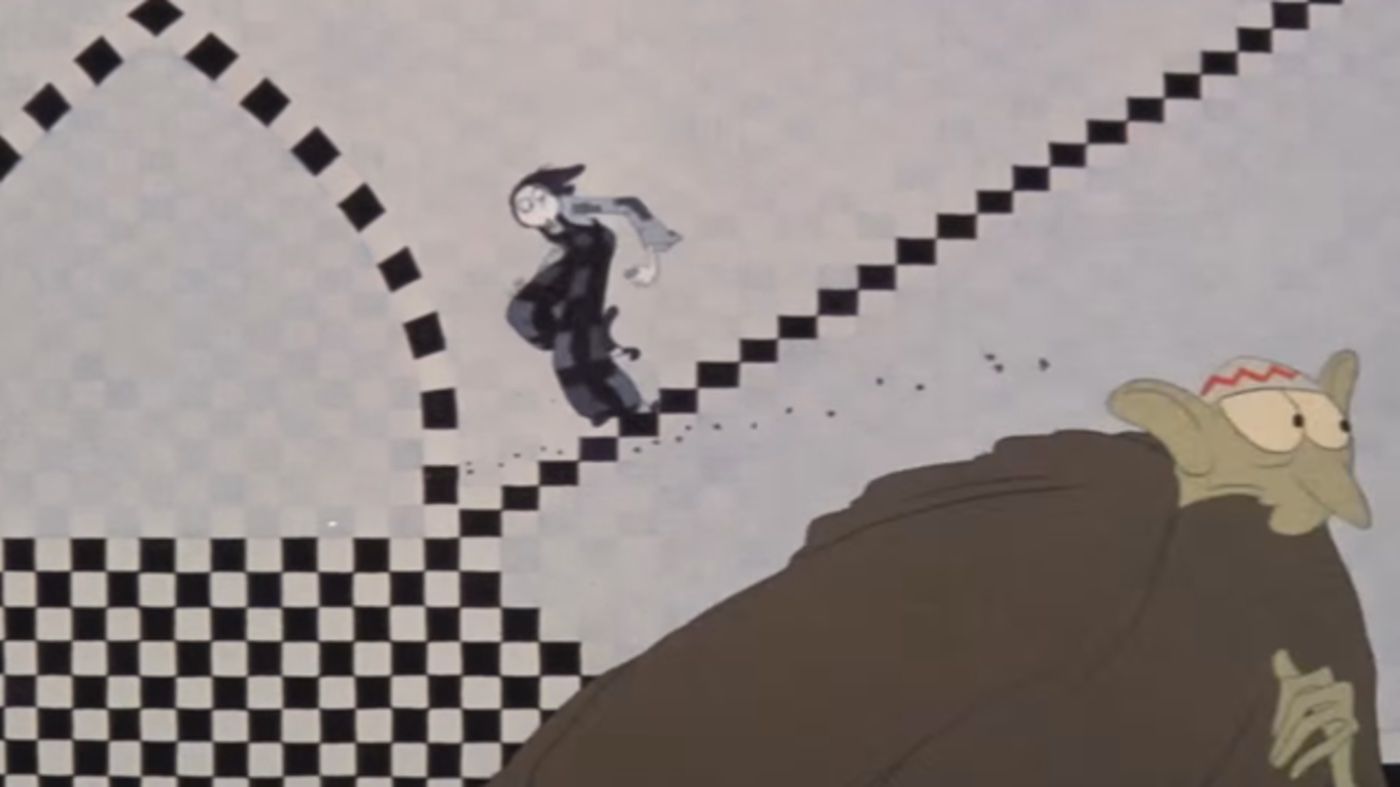For most of the medium’s lineage, an animated feature film has typically taken an average of 5 years to produce before it finds its way to the screen. In the case of The Thief and the Cobbler, the film was beyond average, with a troubled production that was far from typical and took nearly a lifetime to reach completion. Nearly 30 years in the making, The Thief and the Cobbler has been widely regarded as “the greatest animated film never made”, despite receiving multiple theatrical and home video releases in the early ’90s. Why did this cinematic cartoon take so long to gestate, and how has its true vision been left unfinished to this day? The answers begin and end with the film’s ambitious director and late animation genius, Richard Williams.
In the early 1960s, the Canadian-born Williams founded his own London-based independent studio, Richard Williams Animation Ltd. The studio produced eye-popping hand-drawn animation for short subjects, television specials, sequences in feature films, and thousands of commercials for everything from Tic-Tacs to cigarettes. The work done by Williams and his team garnered the studio international acclaim and industry notoriety, attracting the attention of prospective talents and employers the world over. Williams’ hope for the studio was to have this flow of contract work give them the backing to self-finance their own works, including Williams’ dream project of creating his own cinematic masterpiece.
Williams' work caught the attention of author, Idries Shah, who commissioned Williams to illustrate a series of books translating the Eastern folklore of Nasruddin: "the wise fool". Developed concurrently with his studio's contract work, Williams spent the rest of the decade in pre-production of an animated feature film based around the stories of the 13th-century folk hero. The film was for Paramount Pictures in collaboration with Shah, who wanted 50% of the film's profits. However, due to an internal falling out among Shah’s family over rights to the books’ translations and Williams' mistrust over the inequity of the profits split, the Nasruddin film, as it had been conceived, was no more and Paramount backed out. Despite this, Williams was able to retain the original characters he created for the film, which included the film's chief villain Zig Zag (Vincent Price) and a thick-headed thief.
For the decades that followed, Williams and his studio continued to develop the project as its own original story and would fall in and out of production of what he heralded to be his masterpiece; a middle eastern fantasy epic inspired by the Arabian folk tales of “One Thousand and One Nights”. The film eventually came to be called The Thief and the Cobbler and told the story of a golden city saved from invasion by a humble shoemaker named Tack, a royal princess, and a nameless thief. Throughout the ’70s and ’80s, Cobbler would continually find and lose backing from several investors. These included major studios and even a Saudi prince that admired the quality of Williams’ work and the ambition of his project but would back out over the production delays and inflated budgets required to bring his vision to the screen.
The main reason Cobbler’s production was so inconsistent and the costs were so high was due to the meticulous amount of detail that went into the film’s artistry and animation. Williams’ animation can be characterized as having a wild fluidity in their movements and a dynamic sense of perspective. Years before the advent of computer-generated imagery, Williams’ employed complex layouts and perspective drawings to simulate camera movements through environments and around characters to give the two-dimensional world a sense of depth that felt believably alive. While most animation at that time of Cobbler’s production was veering away from the classical methods by implementing fewer frames of animation, Williams sought to harken to the golden age tradition of each second of film containing 24 individually hand-drawn, hand-inked cels. Cobbler’s particular visual style also added a level of complexity to the production as Williams’ love of Persian miniatures and Eastern design influenced the film's painstakingly beautiful backgrounds. With Cobbler, Williams sought to elevate the art of animation to a level of artistry the medium had yet to achieve even in the days of Walt Disney.
Come the late 80’s, Williams’ talents caught the attention of producer/director team Steven Spielberg and Robert Zemeckis, who hired Williams for a film that aimed to bring the golden age of cartoons back to life through a groundbreaking blend of live-action and animation. Who Framed Roger Rabbit stands as Williams’ most well-known work as an animation director. The film required Williams to believably portray, in traditional animation, an entire community of ToonTown cartoon stars that exist seamlessly onscreen alongside flesh-and-blood human actors. Rendering 2D characters in a tangible 3D setting, interacting with props, actors, and lighting effects, earned Williams a special achievement Academy Award and several visual effects awards.
With the success of Roger Rabbit, a newfound interest in Williams netted him another deal with a major studio to complete his lifelong passion project. In 1989, just one year after the release of Roger Rabbit, Warner Brothers signed on to help wrap up production on Cobbler and provide worldwide distribution for the film. Things were finally gaining momentum and Williams’ magnum opus was about to see the light of day, but even with backing from another studio, the film’s complex production continued to miss deadline after deadline and cost more and more money, resulting in Warner quickly backing out of the project in 1992.
Part of the initial Warner deal was that if Williams could not meet the agreed-upon production deadline, the film would be handed over to The Completion Bond Company who would finish the film on time, without Williams’s involvement. In 1993, after nearly 30 years of production, a rushed cut of the film was finally released by Allied Filmmakers in limited international markets under the name The Princess and the Cobbler. In 1995, two more cuts of the film were released by Miramax under the original Cobbler title and the new title, Arabian Knight. While slightly different from one another, each of the three new versions of the film heavily edited Williams’ original workprint and featured new dialogue from celebrity voices, musical numbers, modern pop culture references, and subpar animation that is noticeably less refined than the work by Williams’ studio. All three cuts were financial and critical failures and were far from what Williams spent a decades-long career building up to. Thankfully, a fan project called “The Recobbled Cut” has amassed enough original production workprints, unfinished storyboards, and rough pencil animation to compile a rough estimate of what Williams’ original version was to be in an endeavor that has gone from a humble fan edit to cult restoration.
The legacy of The Thief and the Cobbler, even as an abandoned film, speaks volumes of the legacy of Richard Williams as an artist. Throughout his career, Williams was driven to show the true power that animation has as an art form and that, if masterfully done, can do things that no other medium could. He was inspired to do the greatest work of his career, even at the expense of financial security and time management, for the sake of the art form. He had staked so much toil and sacrifice into The Thief and the Cobbler only for it to be taken away from him by an industry that boiled animation down to its most generally audience-appealing attributes. Williams was a fiercely independent perfectionistic visionary, which may have been the downfall of Cobbler in the end. However, what his story shows is that being a master of your craft requires ambition and a passion for your work that can attract collaborators and sustain you through a lifetime of trial and error.



